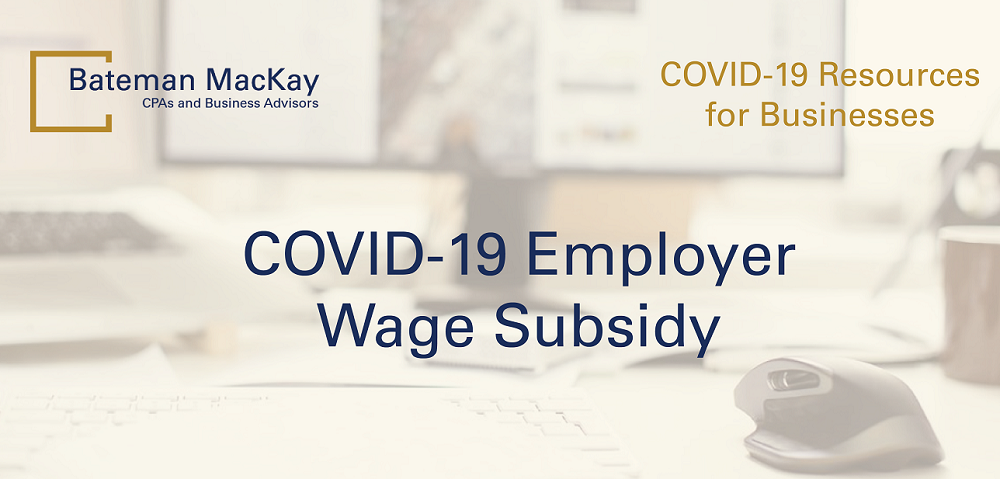
On March 18, 2020, the Federal government announced a proposed wage subsidy, designed to help small businesses during the COVID-19 pandemic. This three month measure is designed to reduce the amount of payroll taxes that a business is required to remit to the Canada Revenue Agency (CRA), enabling the business to have more cash on hand. Here is the information business owners need to know about the subsidy.
Amounts
The subsidy will be equal to 10% of total remuneration paid between March 18, 2020, and June 20, 2020, up to a maximum of $1,375 per worker and $25,000 per employer. The amount received represents taxable income to the employer and it must be reported as income to the employer in the year in which the subsidy is received.
CRA Example 1: If you have 5 employees, the maximum subsidy you can receive is $6,875 ($1,375 x 5 employees).
CRA Example 2: If you have 5 employees earning monthly salaries of $4,100 for a total monthly payroll of $20,500, the subsidy would be 10% of $20,500, or $2,050.
Eligibility Criteria
To be eligible for the subsidy the employer must:
How is the Employer Wage Subsidy Received?
Between March 18, 2020, and June 20, 2020, eligible businesses will determine the payroll source deductions as they normally calculate and then reduce the remittance of federal or provincial payroll taxes (but not EI or CPP) remitted to the CRA. Alternatively, if businesses choose not to reduce payroll remittances during the year, they may ask for the subsidy to be paid at the end of the year. There is no impact on employee source deductions.
If a business does not pay salary, wages, bonuses or other remuneration subject to payroll source deductions to an employee between these dates, it will not receive the subsidy.
If the income taxes deducted are not sufficient to offset the value of the subsidy, a business can reduce future remittances that may fall outside of the application period.
CRA Example 3: If you calculated a subsidy of $2,050 on remuneration paid between March 18, 2020, and June 20, 2020, but only deducted $1,050 of federal, provincial, or territorial income tax from your employees, you can reduce a future income tax remittance by $1,000, even if that remittance is in respect to remuneration paid after June 20, 2020.
Records to Keep
Employers must keep a record of the total remuneration paid between March 18, 2020, and June 20, the amount of federal or provincial income tax that was deducted from that remuneration and the number of employees paid in that period.
Sign up for our newsletter and receive tax, accounting, and business advisory resources for your business!